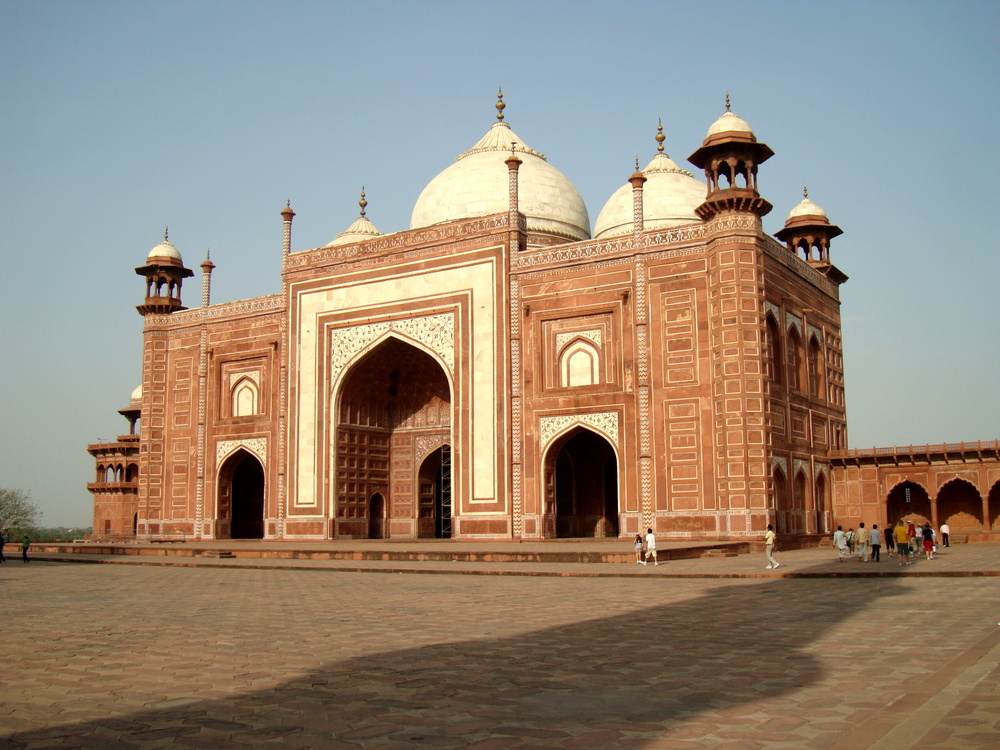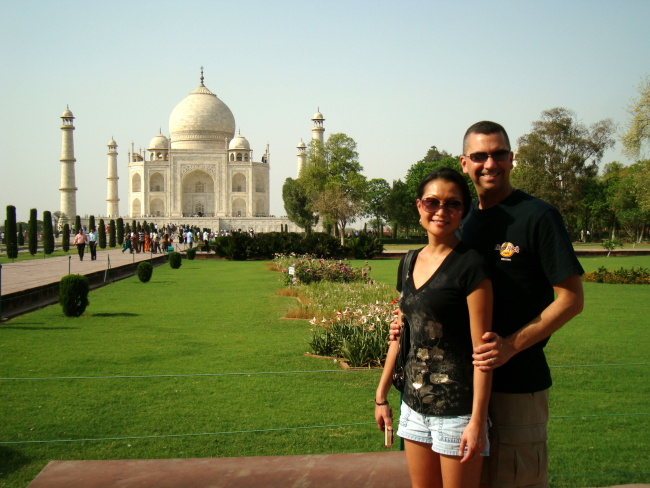by Adams Jones-Kelley
Love can make you do many things.
It can make you laugh.
It can make you cry.
It can make you build the Taj Mahal.
The epic tale surrounding the construction of the Taj has all the trappings of a Hollywood fiction – tragedy, romance, betrayal, murder – but this fable is true, and is one of history’s great tragic love stories.
The story goes that at the ripe old age of 15, Prince Khurram, who would later become Shah Jahan, fifth Emperor of the Mughal Empire, married 14-year-old Arjumand Banu Begum, and fell desperately in love. He gave his beloved the name Mumtaz Mahal (Jewel of the Palace,) and over the next seventeen years they had fourteen children, six of which survived past childhood.
The seventeenth child died during birth, taking her mother with her.
The Shah was so devastated by the death of his wife that he locked himself away for eight days with no food or water. Legend has it that during this time the image of the Taj Mahal came to him in his dreams, so he emerged from isolation, organized a board of architects, and within a year construction commenced.
Some twenty-thousand artisans and craftsman worked to create the stunning memorial. “Taj Mahal” is actually the name for the entire complex surrounding the world-famous white marble tomb, a symmetrical building, nearly identical from every side, with only a variance in the Arabic script above each vaulted archway distinguishing one from another.
The Shah’s monument to his lost love took more than twenty years to build, during which time his youngest son, irked at not being in line for the throne, murdered his three elder brothers and imprisoned his father in Agra Fort.
Shah Jahan lived in confinement for eight long years. Upon his death in 1666 he was entombed next to his wife inside the Taj Mahal. To this day this tragic couple are the only people to have been buried in the Taj.
It’s a magnificent tale, worthy of the magnificent monument. I’m thrilled to have seen it, and will never go back again.
During peak season the Taj sees as many as 100,000 visitors each day. This isn’t peak-season, so we shared space with only about 40,000 people, every one of which seemed to believe that the best way to move the queue along was to press their sweaty, barefoot, often smelly bodies as tightly against the person in front of them as possible.
At times it’s difficult to tell if you’re being jostled or molested. My wife, Soo, favored molested, reporting that there was very little time when she wasn’t swatting someone’s hand off her ass (it was only occasionally mine.)
We bathed immediately upon returning to the hotel.
The Taj Mahal is located in Agra, India’s long-ago capital, and a four and a half hour drive south of Delhi, India’s present-day capital. There are no highways connecting the two cities (of course not, that would make too much sense) so you’re forced to slog your way through mile after mile of dilapidated villages and slums.
The landscape is fascinatingly wretched, in the way a train wreck commands your attention. It’s impossible to envision the squalor in which so many of these people toil if you haven’t seen it up close; it’s heart-wrenching and awe-inspiring at the same time. Soo and I spent much of the drive silently, almost reverently, looking out at the misery from inside our comfortable car.
As you fight your way down the long, uneven roads you contend with the many cows in the streets, chaotic intersections with no traffic lights, cars coming right at you on the wrong side of the road, beggars and panhandlers swarming your car at every pause, and the endless stream of blown horns.
Indians love to honk their horns. The honk when they’re passing someone; they honk when someone passes them. They honk to say hello, they honk to say goodbye. They honk when they’re moving; they honk when they’re stopped. Sometimes I think they honk just to see if the horn still works.
The net result of all this is, of course, that horns in India are utterly useless as a collision warning. By the time the driver has ticked off all the reasons you might have honked it’s too late — he’s already been mushed. (This might explain the suicidal abandon with which they attack the roads – they know they’ll have no warning if they’re about to be hit, so might as well plow on ahead and hope everyone moves.)
About half-way through our endless drive we stopped to have a drink and allow our car’s horn time to recuperate. Our driver honked hello to the snake charmer on the side of the road, who invited us over for a demonstration. Soo and I couldn’t resist, of course, and settled in for the show.
The charmer, with just the two of us in audience, was eager to chat and get us involved. Chatting was difficult, since his broken English rasped through broken teeth sounded like gurgling gibberish, but we gathered he wanted to put the snake in my lap. I’m fond of bad decisions like this, so readily agreed.
I was busily congratulating myself on my moxy when Soo upstaged my bravado by allowing the charmer to wrap the king cobra ’round her neck.
Damn! I was immensely proud of my wife. On a day spent in the shadow of one of the Seven Wonders of the World, this may have been the coolest moment of all.
When we’d tired of the snake we hopped back in the car, tooted our horn, and headed for the Taj, where, upon arrival, we joined in the chorus of honking horns form the myriad of cars, buses and bikes clamoring for a parking space.
It’s been 24 hours, and I can still hear the horns reverberating in my head.
But at least I got to see the Taj. It was an amazing day.
Adam Jones-Kelley, an Atlanta native who lives occasionally (and happily!) in New Zealand, is Managing Director of Site Selection Magazine and OnSite Travel http://www.sitenet.com/travelblog/?page_id=588

